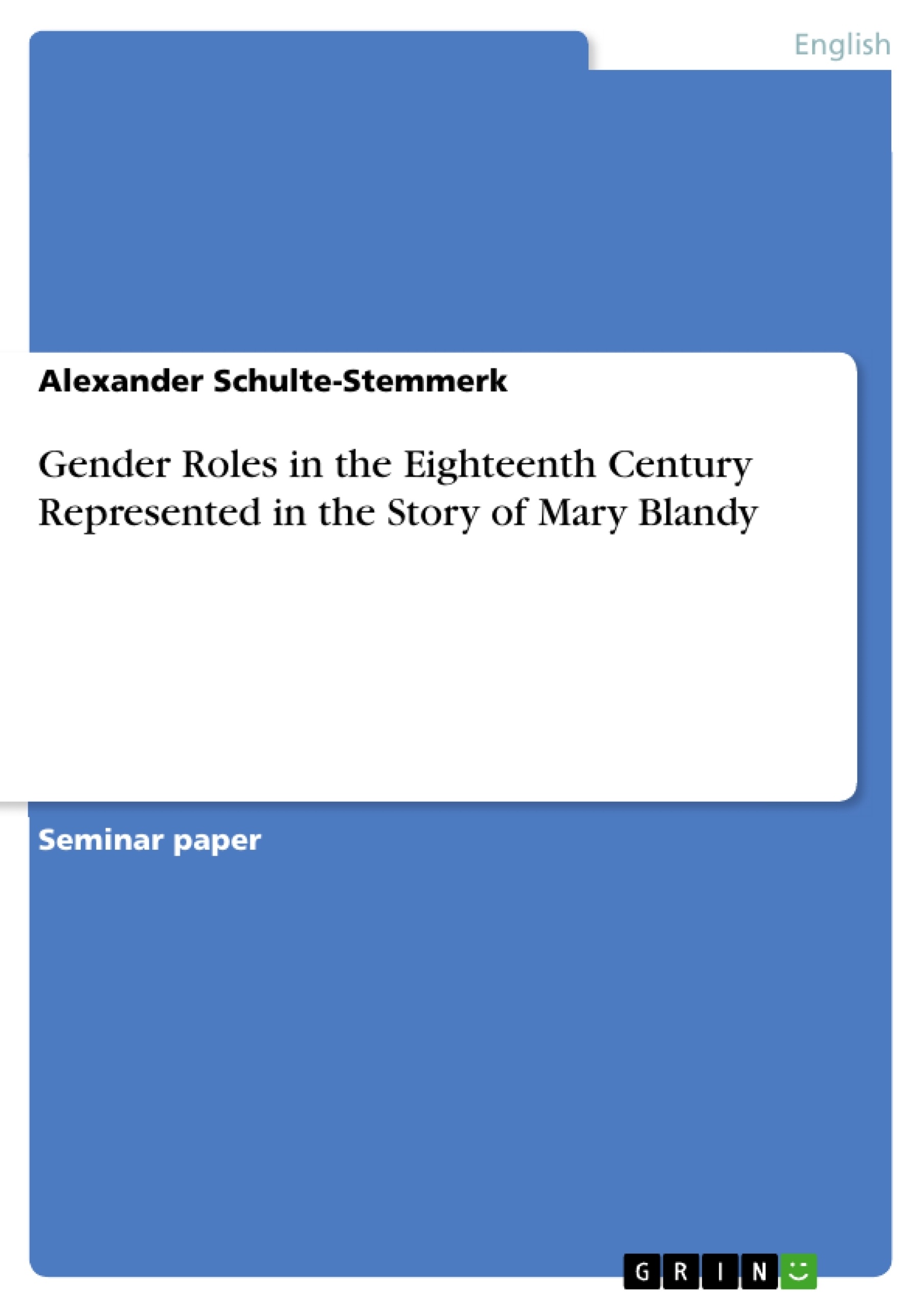The Newgate Calendar,first published during the eighteenth century, was one of the books, along with the bible, most likely to be found in any English home at this period. It contains a large number of eighteenth century trials and is based on the remarkable book calledThe Malefactor´s Register or New Newgate and Tyburn Calendar.
At this time the moving ideas of criminal legislation were retribution and deterrence, and the punishment of every felony was death. In this manner the primary intention ofThe Newgate Calendarwas to inculcate the principles of the right living and to teach the contemporary moral values according to the roles intended for the different sexes. Particularly the children were encouraged to read it because of the reasons mentioned above.
One of the most extraordinary cases recorded in these volumes is the case of Mary Blandy who was found guilty of parricide and sentenced to death in 1752. Her trial generated enormous public interest with over thirty contemporary pamphlets produced analyzing her character and the trial.1The aim of this essay is to show on the basis of the story about Mary Blandy the predefined role of women in the eighteenth-century and to give an overview about gender roles in general at this time. I will examine the relationship between the female accused and the male leading characters of Sir Francis Blandy and Captain William Henry Cranstoun.
This essay is divided into the introduction, a brief summary of the story, an analysis of Mary Blandy´ s relationship to her father and to William Cranstoun, an account of the gender roles in the eighteenth century, whereupon I put the main emphasis on the role of the women, and the conclusion.
Table of Contents
- Introduction
- Summary of the Story
- Analysis of Mary Blandy's relationship to her father and to W. Cranstoun
- Relationship to her father
- Relationship to William Cranstoun
- Mary Blandy's position
- Gender Roles in Eighteenth Century England
- Ideas of female perfection
- Modesty and Restraint
- Subjugation
- Chastity
- Law, feminine violence and punishment
- Ideas of female perfection
- Conclusion
Objectives and Key Themes
This essay aims to analyze the case of Mary Blandy, who was found guilty of parricide in the 18th century, to illustrate the predefined role of women in the 18th century and provide an overview of gender roles during that time. It examines the relationship between Mary Blandy and the male characters, Sir Francis Blandy and Captain William Henry Cranstoun.
- The role of women in 18th-century England
- The case of Mary Blandy and the concept of parricide
- The relationship between Mary Blandy and her father, Sir Francis Blandy
- The relationship between Mary Blandy and Captain William Henry Cranstoun
- The influence of societal expectations and legal frameworks on women's lives
Chapter Summaries
- Introduction: Introduces the context of The Newgate Calendar and its significance in 18th-century England. The essay focuses on the case of Mary Blandy, her trial, and its relevance to understanding gender roles.
- Summary of the Story: Provides a brief account of Mary Blandy's story, including her alleged poisoning of her father and her subsequent trial and execution. The summary highlights the conflicting accounts of her involvement and the role of her lover, William Cranstoun.
- Analysis of Mary Blandy's relationship to her father and to W. Cranstoun: This section will analyze Mary Blandy's relationship with both her father and her lover, exploring how their actions influenced her decisions and how her position within societal norms shaped her actions.
- Gender Roles in Eighteenth Century England: Explores the dominant ideas and societal expectations concerning female perfection, including modesty, restraint, subjugation, and chastity. It also examines the legal framework surrounding women and the consequences of feminine violence.
Keywords
Key words and concepts explored in the essay include: The Newgate Calendar, gender roles, 18th-century England, Mary Blandy, parricide, female perfection, societal expectations, legal frameworks, and the relationship between women and men.
- Citar trabajo
- Alexander Schulte-Stemmerk (Autor), 2005, Gender Roles in the Eighteenth Century Represented in the Story of Mary Blandy, Múnich, GRIN Verlag, https://www.grin.com/document/50597



